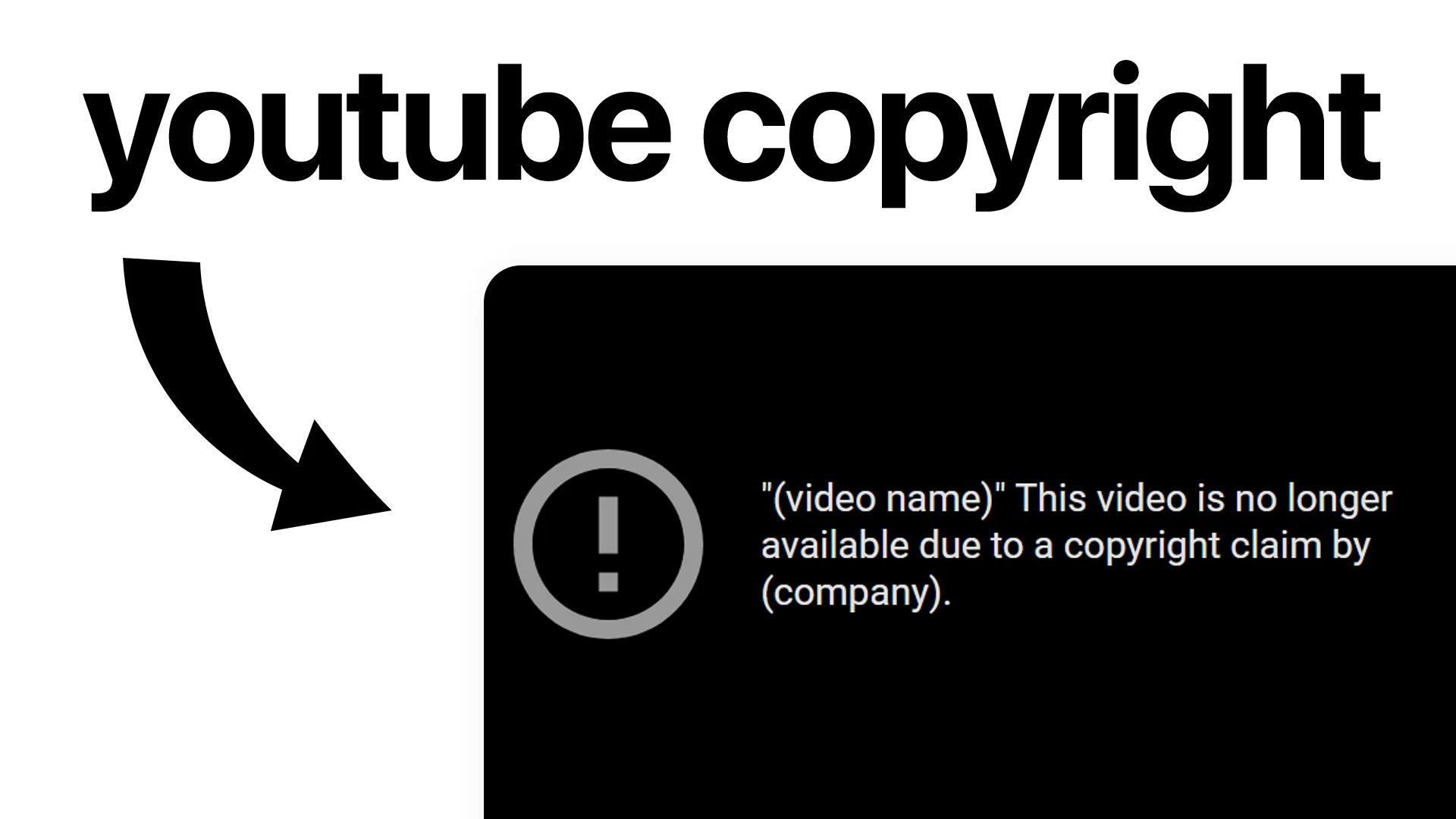If you're posting videos on YouTube, understanding copyright and fair use is essential. Even the most creative channels can get hit with copyright strikes or takedowns. But don't worry! With the right knowledge, you can keep your content safe, avoid headaches, and still use inspiration from others.
What is Copyright on YouTube?
Copyright protects original works like music, video clips, images, and more. On YouTube, you can't use someone else's work (even a few seconds) without permission, unless it's clearly allowed.
- Music (songs, beats, soundtracks)
- Video footage (TV, movies, other YouTubers)
- Images (artwork, graphics, memes)
- Text (scripts, quotes, subtitles)
Uploading copyrighted content without the right permissions can result in a Content ID claim, a takedown, or even a copyright strike.
What is Fair Use?
Fair use is a legal doctrine that allows limited use of copyrighted material without permission, but it's complicated and not a “free pass.” It usually covers:
- Commentary and criticism (like reviews or reactions)
- Parody or satire
- Educational uses
- News reporting
Even if your video is educational or a review, there's no guarantee it will count as fair use. YouTube and copyright owners can still block or take down your video if they disagree.
Content ID, Copyright Claims, and Strikes
YouTube uses a system called Content ID to scan every uploaded video for copyrighted audio and video. Here's how it works:
| Event | What It Means | Result |
|---|---|---|
| Content ID Claim | System detects copyrighted content | Owner may monetize, block, or track your video |
| Copyright Strike | Manual complaint by copyright holder | Your video is removed; 3 strikes = channel termination |
| Takedown Notice | Owner requests removal | Your video is taken down, and you may get a strike |
Most Content ID claims do NOT hurt your channel—but strikes can.
How to Stay Safe as a YouTube Creator
- Use Original Content: Record your own video and audio whenever possible.
- License Music and Media: Use royalty-free libraries or get permission for any third-party material.
- Give Credit, But Know It's Not Enough: Listing the source in your description does NOT prevent copyright strikes.
- Understand Fair Use is Risky: Even if you believe your use is fair, you can still get a claim or strike. Only courts can make the final call on fair use—not YouTube.
- Appeal Carefully: If you get a claim you believe is wrong, you can appeal or dispute it in YouTube Studio, but use this option with caution.
Examples: What's Usually Allowed and What Isn't
| Example | Allowed? |
|---|---|
| Posting a song from your favorite band | No, unless you have rights or permission |
| Using short clips for review/critique | Maybe (fair use), but risky |
| Uploading royalty-free music with credit | Yes, if you follow license terms |
| Screen-recording a TV show | No, almost always gets claimed or taken down |
| Making a parody with your own music and lyrics | Often allowed, but still possible to get claimed |
What To Do If You Get a Copyright Strike
- Read the email from YouTube and check your Studio dashboard.
- Remove any other copyrighted material to avoid more strikes.
- If you believe your video was taken down unfairly, you can file a counter-notification—but only if you're sure you have a legal right.
- After three copyright strikes, your channel is removed. Strikes expire after 90 days if you don't get any more.
Pro Tips for Copyright Safety
- Stick to content you create or have licensed.
- Use YouTube's Audio Library for free, safe music and sound effects.
- Keep documentation of licenses and permissions.
- Be cautious with memes and trending clips—they're not always safe to use.
FAQ: Copyright and Fair Use on YouTube
What is a copyright strike on YouTube?
A copyright strike is a formal complaint from a copyright owner that your video used their content without permission. Three strikes in 90 days will remove your channel.
Is giving credit enough to avoid copyright issues?
No, giving credit does not protect you from copyright claims or strikes. You still need permission or a proper license.
How does fair use work on YouTube?
Fair use can allow you to use small parts of copyrighted works for purposes like commentary, criticism, or parody, but it is not guaranteed. Only courts can decide if your use qualifies as fair use.
Can I use music from YouTube's Audio Library?
Yes, YouTube's Audio Library is free for creators and safe to use as long as you follow any listed requirements.
What should I do if I get a copyright strike?
Check your email and Studio dashboard, remove any unlicensed content, and only appeal if you are certain you have a right to use the material.
